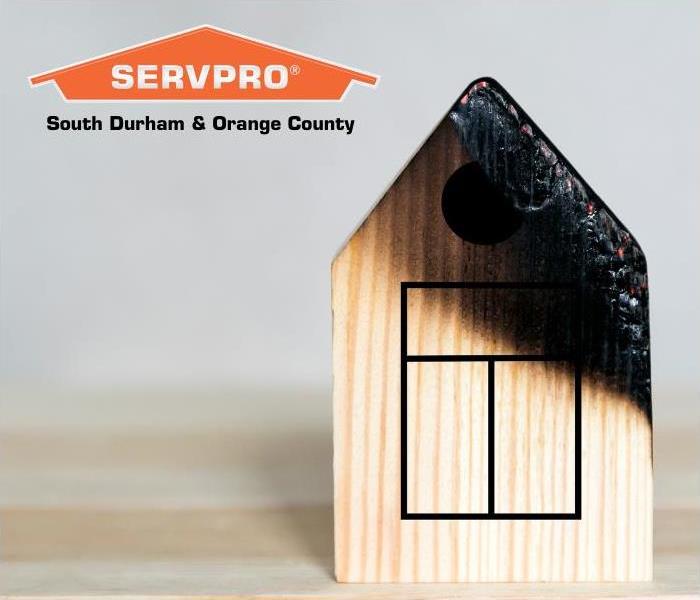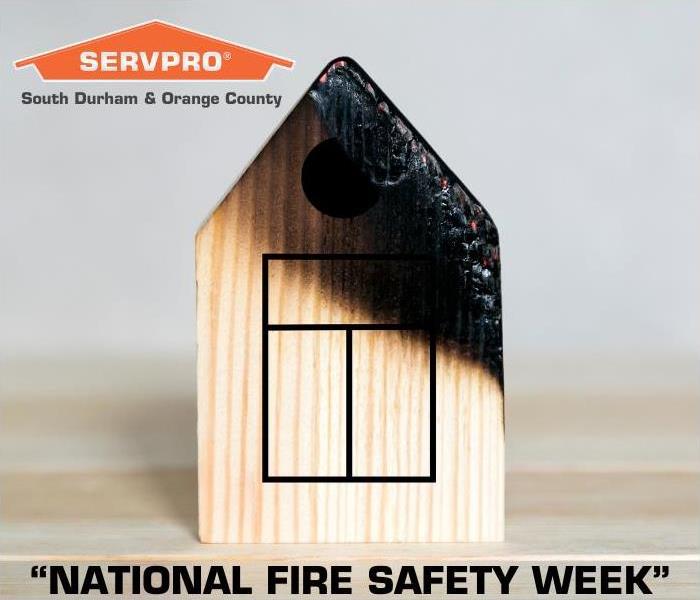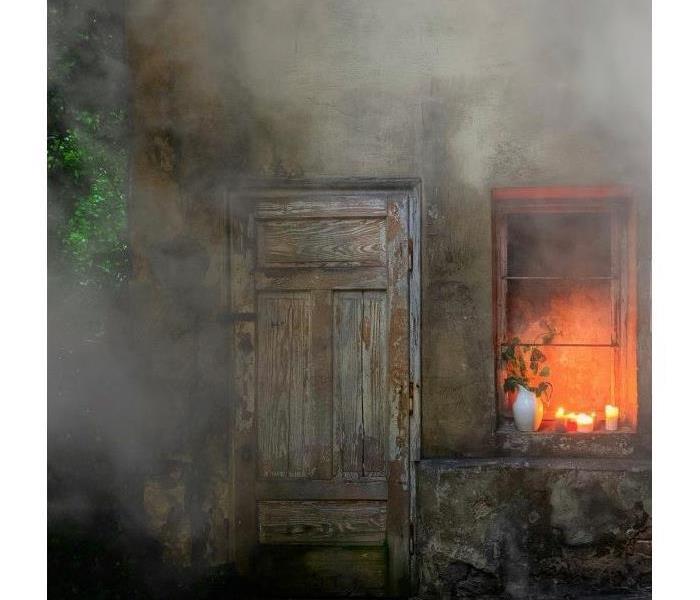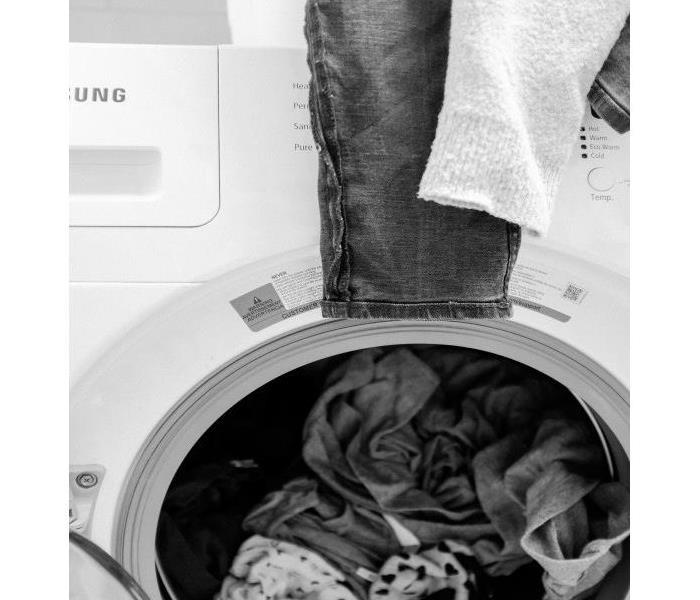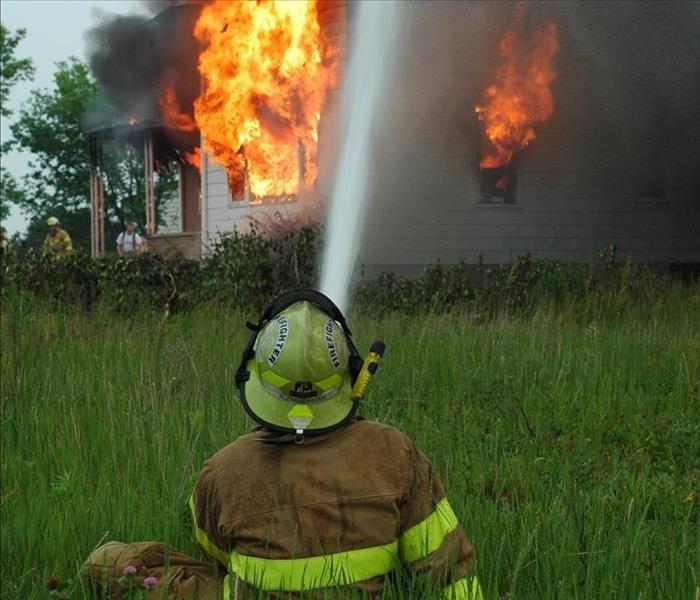Recent Fire Damage Posts
Why Soot Removal is Crucial After a Fire
3/24/2025 (Permalink)
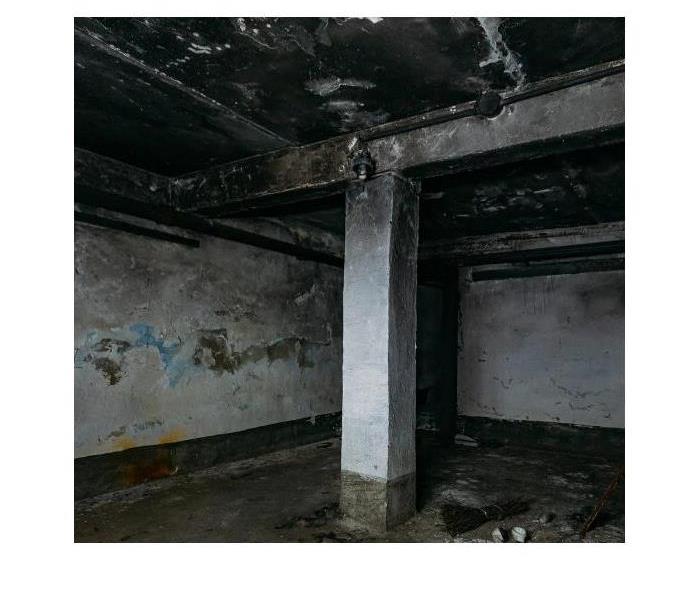 Soot in house
Soot in house
When a fire strikes, the immediate danger may pass once the flames are extinguished, but the damage left behind can linger in unexpected ways. One of the most persistent and hazardous remnants of a fire is soot. Soot, a fine black residue made of carbon particles, can settle on surfaces throughout your home or business, creating significant health risks and structural damage if not properly addressed.
The Dangers of Soot Contamination
Health Hazards – Soot particles are incredibly small, allowing them to become airborne and easily inhaled. Prolonged exposure can lead to respiratory issues, eye irritation, and aggravated conditions like asthma or bronchitis. Additionally, soot may contain toxic substances depending on the materials burned in the fire, making prompt removal crucial for a safe environment.
Structural Damage – Soot is not just a surface-level problem. Its acidic nature means it can corrode and etch into materials like metal, glass, plastics, and wood over time. If left unaddressed, soot can permanently stain walls, ceilings, and upholstery, leading to costly repairs or replacements.
Lingering Odors – The smell of smoke can persist long after a fire if soot is not thoroughly removed. Soot particles embed themselves deep within porous materials like carpets, fabrics, and insulation, making it difficult to eliminate odors without professional cleaning techniques.
Why Professional Soot Removal Matters
While DIY cleaning methods might seem like a quick fix, improper cleaning can spread soot further and make the damage worse. Professional restoration services like SERVPRO have the expertise, equipment, and specialized cleaning agents to safely and effectively remove soot without causing additional harm.
Our trained technicians use industry-leading techniques such as:
HEPA vacuuming to remove loose soot particles
Chemical sponges to clean walls and surfaces without smearing residue
Advanced air scrubbers to filter airborne contaminants
Thermal fogging and ozone treatments to neutralize smoke odors
Act Fast to Minimize Damage
The longer soot sits, the harder it is to remove. Acting quickly can prevent further deterioration and ensure a healthier environment for your home or business. If you've experienced a fire, don’t let soot linger—contact SERVPRO for professional fire damage restoration and soot removal services. We’re here to make it “Like it never even happened.”
Sparky, No Sparking!
7/19/2022 (Permalink)
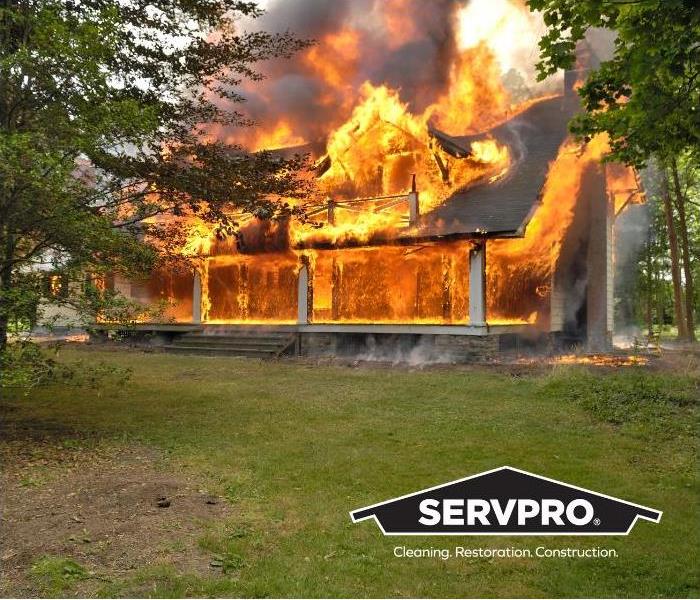 House Fire
House Fire
Today marks National Pet Fire Safety Day. National Pet Fire Safety Day takes place every year on July 15th and is meant to provide fire education and fire safety tips to prevent your pet from starting a fire and keeping your pet safe during a fire. According to WRAL.com, just three weeks ago in Hillsborough, North Carolina a single mother and her three kids are starting over after a fire destroyed their home and killed all the family’s pets! Orange Rural Fire Department spent hours getting the fire under control that likely started in the kitchen. Our pets are many times the culprit behind residential fires. If not the culprit, almost always the victim! The American Red Cross states, “that residential fires are the most common disaster that the organization responds to, yet the most preventable.” However, the most effective way “to protect your pets from the effect of a fire is to include them in the family emergency escape plan.” Take time to visit the American Red Cross website today, on National Pet Fire Safety Day, to get tips on how to prevent your pet from starting and fire and how to keep them safe during a fire. Lastly, if you experience the unfortunate event of a fire loss, the most important thing to remember is that SERVPRO Of South Durham is by your side every step of the way to get life back to normal. “Like it never even happened!”
When you think, “Cleaning. Restoration. Construction.” Think SERVPRO of South Durham!
And The Rocket’s Red Glare; Fireworks Bursting In Air
7/1/2022 (Permalink)
 Family watching fireworks
Family watching fireworks
Every year around this time as the July heat starts to take control of the summer, residents in NC and Durham begin to prepare for the 4th of July holiday weekend! For many North Carolinians, this is an opportunity to connect with family and friends, host weekend events and cookouts, and enjoy a much-needed break from work! This is also a time for many to gather in the back yards and open fields of the Carolina countryside to display both consumer and professional grade pyrotechnics (fireworks). This time of the year has also inherently become associated with pyrotechnic-related injuries and fire damage. The Consumer Product Safety Commission estimates that 9,100 injuries seen in hospital emergency rooms in 2018 were pyrotechnic related. The CPSC also contained reports of at least 5 direct firework-related deaths in the year. Burns accounted for 44 percent, with males accounting for around two-thirds of the firework-related injuries. The numbers don’t just stop there. The National Fire Protection Agency (NFPA) estimated that 19,500 fires were started by pyrotechnics and reported to local fire departments in 2018 resulting in $105 million in direct property damage. Secondary brush, grass, or forest fires accounted for 3 of every 5 reported fires started by fireworks during that time. In all, focusing on just the Fourth of July half (49 percent) of the reported fires on that day was started by fireworks! The absolute best pyrotechnic prevention in place is to avoid use and watch professional shows where available and when permitted. However, in the event of personal injury or property damage when using pyrotechnics, call 911. Shall property damage occur, it is best to have an emergency cleanup, restoration, and reconstruction company such as SERVPRO of South Durham to mitigate any secondary fire and smoke damage that occurs from pyrotechnic fire damage. Whether fire and smoke damage, odor control, upholstery, fabric cleaning, or water damage restoration, our restoration specialists are specially certified and trained with a restore v. replace strategy to offer the most added value cost-effective solutions to return your home or structure to preloss condition. For more information on how to celebrate for Fourth of July responsibly and operate pyrotechnics safely, visit the City Of Durham website.
When you think, “Cleaning. Restoration. Construction.” Think SERVPRO of South Durham!
It's Electric!
4/29/2022 (Permalink)
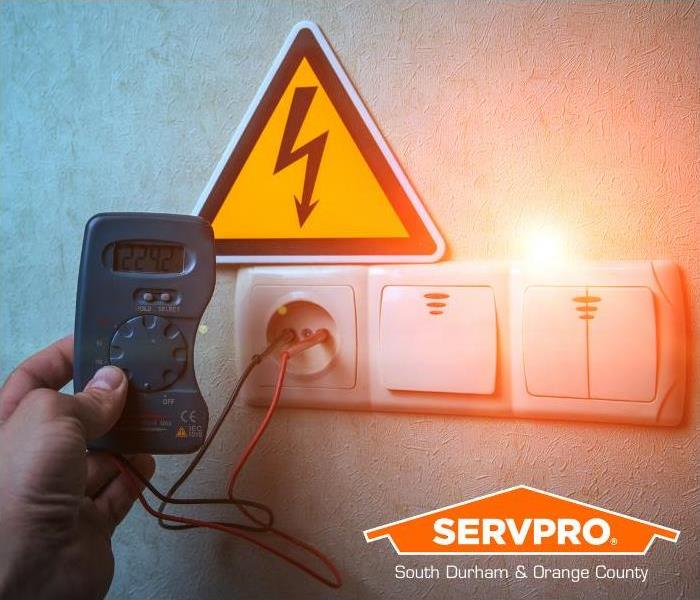
Very little was known about electricity until the 18th century when founding father Benjamin Franklin conducted the famous “kite and key” experiment to show the relationship between lighting and electricity. Shortly afterward, the light bulb was patented and perfected by Thomas Edison in 1879 and electricity has made modern life easier by powering our homes, electronics, appliances, and entertainment ever since. However, without proper safety and handling, the convenience of electricity can also destroy homes, neighborhoods, and even lives. Electrical Safety Foundation International (ESFI) states, “Home electrical fires account for an estimated 51,000 fires each year, nearly 500 deaths, more than 1,400 injuries, and $1.3 billion in property damage.” May 1st kicks off National Electrical Safety Month intended to reduce the number of electrically related fires, fatalities, injuries, and property loss. Safeelectricity.org offers great tips and resources on how to avoid electrical fires in the home. It’s important to visually monitor outlets, plugs, and cords for damage or malfunction. ESFI states, “While electrical hazards are not the leading cause of on-the-job injuries and accidents, they are disproportionately fatal and costly.” The National Electrical Code (NEC), OSHA, and the National Fire Protection Agency are all great industry standards and codes to follow to provide an electrically fire-safe work environment for employees. Esafety.com offers 10 quick tips for electrical safety in the workplace. Every business and homeowner should know that when the firetruck leaves, your home or business has likely suffered from extensive fire, smoke, and possible water damage. The certified fire restoration specialists and water damage restoration technicians employed at SERVPRO of South Durham have specialized equipment, the expertise, and the response time required to get your home or business back to preloss condition. Our professionals also understand that commercial fire losses present a unique set of problems for large businesses. Whether your fire emergency occurs in a restaurant, motel, or office building, SERVPRO of South Durham is your one-stop shop for cleaning, restoration, and construction. Our commercial fire restoration services include inspection and estimating, mitigation, restoration, and reconstruction. Remember, our goal in any residential or commercial loss is to leave the client feeling completely satisfied and “like it never even happened!”
When you think, “Cleaning. Restoration. Construction.” Think SERVPRO of South Durham!!!!
“The Roof! The Roof! The Roof Is On Fire!”
3/21/2022 (Permalink)
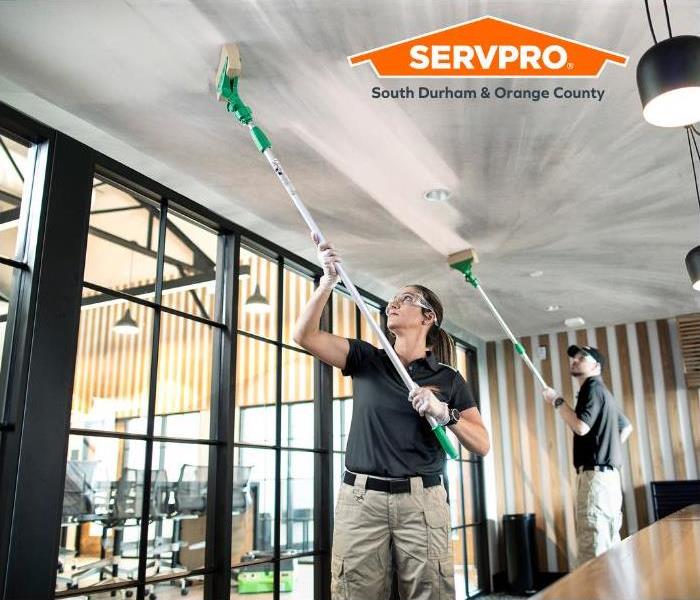
Before we dive deep into this week’s blog about fire safety. I want to take time to send a special, “Happy Birthday!” to Sparky who turns 71 years young today! Sparky is Durham City’s Fire Dog Mascot and the National Fire Protection Mascot that has been serving our local and national communities through fire prevention education since 1951! If you’d like to meet Sparky in person, he will be at the Museum of Life and Science tomorrow from 10:00 am to 1:00 pm to promote the science of fire safety! Earlier this year I posted a blog, New Year Fire Resolution, that addresses fire preparedness and how well we are prepared to prevent a fire from occurring. While the audience has been prepped on fire safety and prevention, it is helpful to know what to do after an unfortunate experience with fire. Last month in South Durham, a fire started by a pickup truck caused major damage to a home. Luckily, no one was home or injured during the blaze. However, can you imagine the emotion, shock, and disappointment the family must have experienced once they arrived home to see all their personal belongings destroyed? This week’s blog motivation is to help educate the audience on determining the next steps after dealing with a fire. Durham Fire Department offers a great tool, After the Fire, to help families and individuals determine the next step. One of the more important themes I pulled from the manual is to always have a “vital information” sheet. This sheet helps provide first responders, the family, and the main point of contact with important information, like the date and time of the incident, report numbers, and restoration contact numbers to enable a quicker response in the time of an emergency. Many times, during catastrophes, we lose sight of what should matter the most – our wellbeing! The manual states, “immediately after a fire to have any injuries treated by a qualified professional.” This is important as any untreated injury could easily transition into a serious injury. Lastly, as the victim of a fire may be anxious to enter the dwelling and begin to rebuild their life, it is important to remember to check with the fire department to ensure your residence is safe. It is important not to eat, drink, or inhale fumes from anything that has encountered flames, smoke, or soot. When the time comes to enter the home, trust your IICRC Certified Fire Restoration Specialists at SERVPRO of South Durham to help you restore your home and life to pre-fire condition.
When you think, “Cleaning. Restoration. Construction.” Think SERVPRO of South Durham!!!!
Did You Get Fido?
2/11/2022 (Permalink)
Recently, when trying to decide what to blog about this week, I experienced writer’s block and briefly came to a standstill; lost as to what to write. I did what any modern person in this day and age would do; I pulled out my phone and started scrolling through social media! While doing so, I came across a heartfelt article about a dog being rescued from a home electrical fire; while the family was away! This led me to think about a recent blog post where I discussed fire preparation. I realized nowhere in the post did I mention our beloved pets and how we can prepare them in the case of a fire emergency. In addition to implementing the steps mentioned in the previous post for fire prevention and preparation, ASCPA lists some great suggestions to ensure our “fury” friends are prepared should a fire or emergency occur. Here are some steps I found that I overlooked but would be super resourceful in the time of a fire emergency:
- Pet-proof your home. Many times, as pet owners, we overlook potential fire hazard areas where pets could inadvertently start a fire. These forgotten areas include stove knobs, loose wires, candles, and fireplaces to name a few.
- Get a rescue alert sticker! The specific decal alerts rescue workers and public service officials that your home has pets. It generally includes information like the number of pets, veterinarian contact, and even a section if you have evacuated your pets!
- If you have to evacuate, take your pets when possible! If conditions are severe enough where the owner needs to evacuate, try to evacuate the pets in the home if permitted!
In the unfortunate event that you and your pet experience a fire or emergency, you may feel stressed or confused about how to begin the process to get your life back on track. Our caring and professional fire restoration and clean-up specialists at SERVPRO of South Durham can help guide you through the crisis and get your home back to preloss condition “Like it never even happened.”
New Year Fire Resolution
1/7/2022 (Permalink)
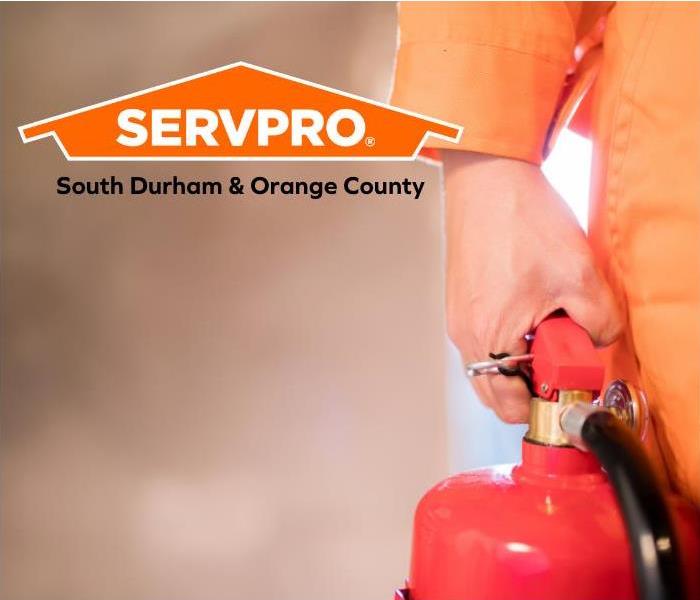
As we leave 2021 in the past and look forward to New Year resolutions for 2022, we begin the routine of preparing ourselves for the next chapter of our lives in a new year! Many of us prepare for a new fitness journey by eating healthy or prepare to purchase a new house by dialing back on unnecessary expenses. However, what steps have you taken to prepare for an unexpected fire emergency? Have you discussed with your family or team at work what to do before, during, and after a fire occurs? The American Red Cross offers great tips on preparation in the event of a fire for families. For businesses, OSHA offers resources and guides on how to prepare a business for fire safety, prevention, and preparation by OSHA standards. The most important tip any household or business can do to prepare is to make sure that every level of the structure has a fire alarm or fire alarms adequate to the square footage needed to alert all occupants in the case of a fire. Lastly, in the unfortunate event that you experience a fire emergency at home or at work, allow the professionals at SERVPRO of South Durham to get your home or business back to pre-fire condition “Like it never even happened.”
Fire Safety and Your Pet
10/11/2021 (Permalink)
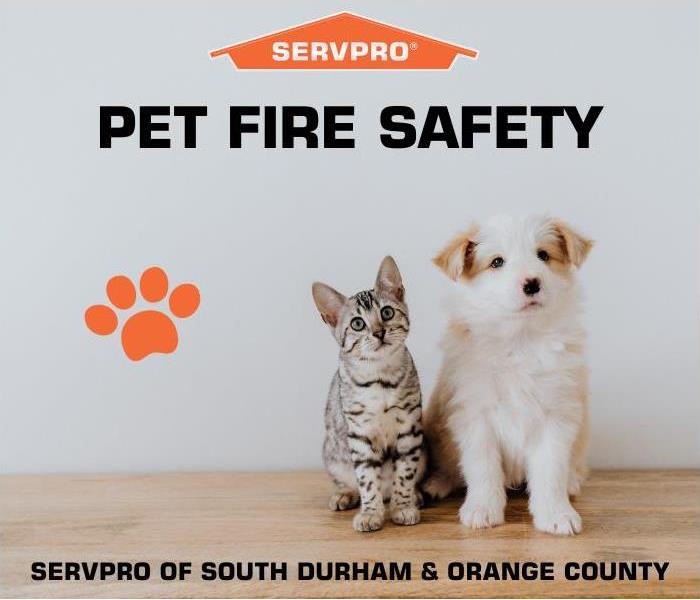 Pet Fire Safety
Pet Fire Safety
According to an article on the American Red Cross website, the National Fire Protection Association estimates that one thousand (1000) house fires can be attributed to pets each year. With this fact in mind they compiled a list of helpful, best practices to protect your home, your family and pet.
- Have a Home Fire Escape Plan and include your pets. Formulating and implementing an escape plan is simple and requires little time. Simply diagram exit and escape routes. Create a meeting spot. Plan for second story egress, elderly, children and pets. Make sure everyone knows their role and responsibility. Practice your escape plan twice a year.
- Make sure you have proper working smoke detectors. Have monitored smoke detectors that are tied to a central station. Check batteries of detectors monthly. Make sure all occupants of the home know the sound of the alarm.
- Place a sticker on door or window to alert fire fighters of how many pets are in the home.
- Keep pets near an exit door so they can be easily found and rescued.
- Keep pets away from open flames like candles and fire places. Never leave pet unattended where there is an open flame.
- Crate young or untrained pets to prevent them from chewing electrical wires and causing a fire.
- Remove knobs from stoves to prevent accidently turning on a stove eye.
- Keep a collar on your pet to aid in rescue if necessary.
- Prepare a disaster or displacement kit for your pets.
- Pre-plan a location to house your pets if you have a fire and are displaced.
- Never delay your escape from a burning building to save your pet.
Do You Have a Home Fire Safety Plan?
7/16/2021 (Permalink)
 Do You Have a Home Fire Safety Plan?
Do You Have a Home Fire Safety Plan?
Do You Have a Home Fire Safety Plan?
Having a home fire safety plan could be the difference between life and death in a fire emergency. Although most people agree to the importance of having a plan, sadly; they fail to have one for themselves. Too often, people allow the tasks of daily living to stand in the way of putting a plan in place. The goal of this this post is to show readers that it is quick, simple, and invaluable as well as to inspire readers to take the necessary action to implement a plan. Here’s how to do it:
- Draw a simple floor plan of the home.
- Label all exit points
- Establish a meeting location for all occupants of the home
- Check smoke detectors to make sure they are working properly
- Make provisions for small children and elderly family members in the home
- Practice your drill, and make sure everyone gets out within two minutes
- Have two ways to exit all rooms if possible, this may mean purchasing a fire escape ladder
- Practice using the fire ladder with everyone
- Practice getting low and crawling to safety
- Practice the plan during different times of the day and night and at least twice a year
- Teach children over the age of six to get to safety without adult supervision and to meet at the established meeting location.
- Teach children to never go back inside a burning home
- Post your plan by the exit doors
Now go out and do it, so that the next time you asked if you have a home fire escape plan you can confidently say, “Yes”.
Investigating Smoke Odors for Deodorization
7/9/2021 (Permalink)
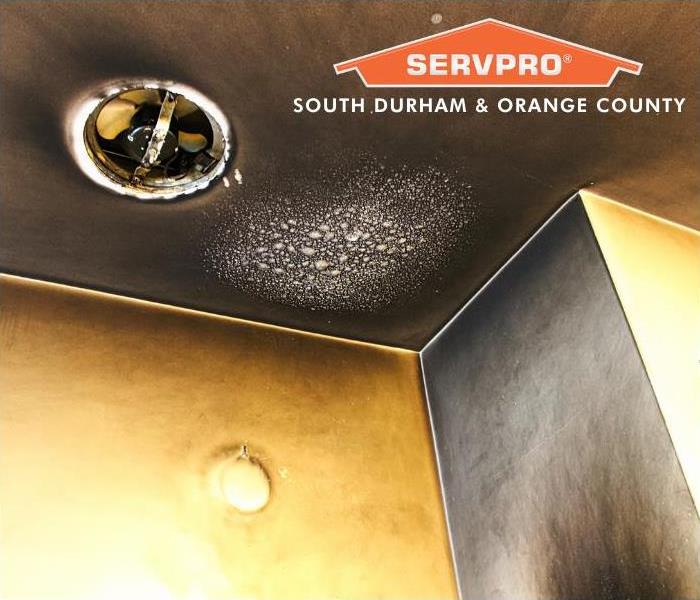 Investigating Smoke Odors for Deodorization
Investigating Smoke Odors for Deodorization
A pot of food left unattended on a stove that catches fire or a food item left too long in the oven that burns creates a significantly obtrusive malodor, that the household occupants desire to be quickly removed. Odors can be stubborn and long-lingering, requiring specialized solutions to successfully remove.
The first thing a successful odor removal specialist must investigate regarding a malodor is to determine the source of the odor. It may seem simple and straight forward but knowing the source requires more than just knowing where it occurred. Successful analysis requires locating what materials were affected, and where all smoke particulates and residue went.
Smoke residue is responsible for odors that linger and cannot be successfully masked long term with chemical sprays. An odor removal specialist will use chemical sponges and search areas beyond just the room of origination. If the AC unit was operating they will check all rooms to determine if there is smoke residue. If The AC Unit was off they will check to see if doors were closed or open. If they were open they will analysis those rooms to determine if there is any residue. The will check the returns, vents, furniture and electronics, and wall coverings. Smoke residue can cause significant damage to items including discoloration, and system malfunctions along with odors. There are also health considerations that must be taken into consideration when certain items burn that are carcinogens. Removing harmful particulates that remain suspended in the air are also a consideration to a trained odor removal specialist.
If you have had a fire, that has resulted in an obnoxious odor that air fresheners can’t remove, call SERVPRO of South Durham and Orange County for a professional analysis at 919-596-1242.
Understanding Smoke Detectors
6/30/2021 (Permalink)
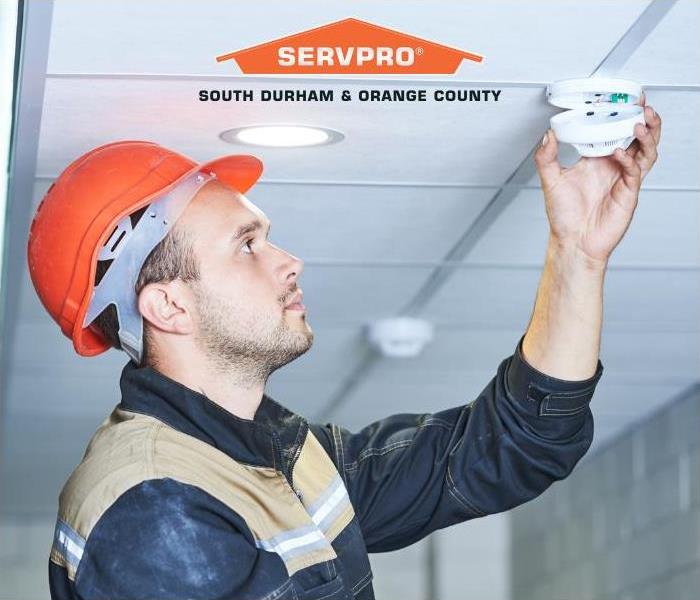 Understanding Smoke Detectors
Understanding Smoke Detectors
Smoke detectors in a home or commercial setting can mean the difference between life and death. A fire can double in size in seconds, making a proper first alert system a critical component in life safety. There are two types of smokes detectors, ionization and photoelectric smoke sensors
Ionization smoke detectors are most effective in the detection of a flaming fire. Ionization detection alarms function by ionizing the air between two electrically charged plates containing small amount of radioactive material. The ionized air under normal conditions freely flows between the two plates. When smoke enters it disrupts the current causing the detector to alarm.
Photoelectric smoke detectors are best at detecting smoldering fires. Photoelectric smoke detectors operate by aiming a light source away from the sensing chamber in the detector. When smoke enters the sensing chamber it diverts the light into the sensing chamber triggering the alarm.
The most effective smoke detector is the one that is in operation. The combination of both ionization and photoelectric smoke detectors is the most effective method of being prepared for both a smoldering and flaming fires. It is important to make sure your detectors are operating properly. Make sure that you change the backup battery inside the detector when you hear the detector beeping or chirping. Also make sure the red light on the detector is on, which means it is working.
Tips for Safe Summer Grilling
5/27/2021 (Permalink)
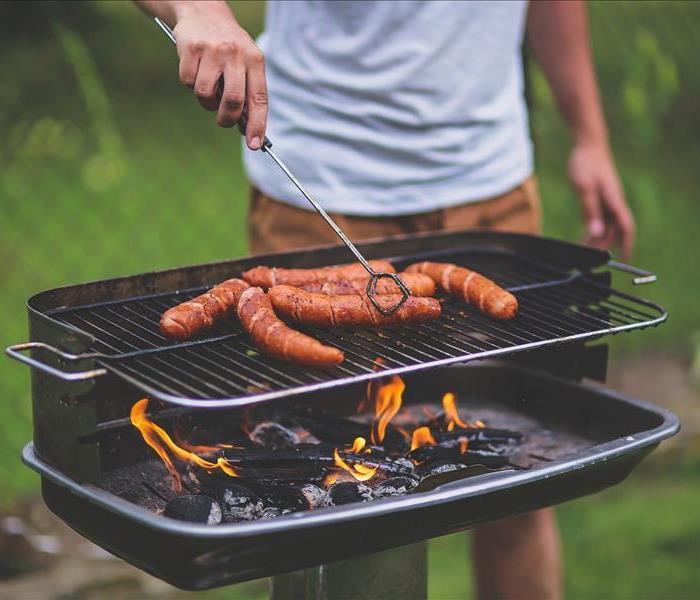 Safe Summer Grilling
Safe Summer Grilling
The aroma and taste of grilled food signals the arrival of summer. With Memorial Day weekend quickly approaching, now is a good time to review tips for safe grilling. According to statistics listed on the National Fire Protection Association website 7 out of 10 adults own a grill. Between 2014 and 2018 fire departments responded to an average of 8900 fire calls involving grills with 3900 being structure fires. Safety is essential to prevent accidental injury, property damage and even death. Follow these simple tips to assure all your grilling events will have a favorable and safe outcome.
- All grilling, with charcoal or propane should be done outside and safely away from structures that could catch fire to include the house, deck railing, eaves of home and overhanging branches.
- Open grill cover before lighting
- Practice safety with lighter fluid. Do not use too much, and when lighting do not get too close, use a newspaper or paper to safely keep distance.
- Only use charcoal lighter fluid to start coals. Never use gasoline or any other flammable liquid.
- Keep children and pets a minimum of three feet away from the grill.
- Never leave the grill unattended.
- Always make sure your grill is cleaned of all fat and grease to prevent excessive flames.
- If you have a propane grill, make sure there are no leaks in the tank or connections.
- Never leave the grill unattended
- Allow coals to completely cool before removing them. Place removed, cooled down coals into a metal can for proper disposal.
Thanksgiving and Fire Safety
11/23/2020 (Permalink)
 Thanksgiving and Fire Safety
Thanksgiving and Fire Safety
Thanksgiving is a special holiday that celebrates good food, family, fun and fires. Thanksgiving Day is the number #1 day in which home fires occur and 87% of those fires are cooking related. In order to make your Thanksgiving fire free, safety must be a priority. Here are several key tips you can easily implement.
- Make sure your cooking apparatuses are clean. Clean the eyes of the stove to remove potential debris that could catch fire. Clean the oven to remove any spill overs which could become flammable.
- Make sure cooking apparatuses are in good working order. Make sure there are no electrical shorts or frayed wires.
- Never plug cooking devices into an extension cord
- Never leave food unattended
- Be vigilant- when cooking don’t become distracted where you are not closely watching items that are cooking. An engaging conversation, either on the phone or in person can cause a distraction that could allow a situation to flare up which could have been prevented.
- Keep flammable items away from cooking surfaces.
- Make sure electrical cords are outside of the reach of children and pets.
- Keep pets outside of the cooking area
- Never overload outlets
- Deep fry turkeys outside and sufficiently away from the home.
- Make sure turkey is thawed all the way prior to placing it in the oil to prevent splatter which could cause burn injury.
- Keep a fire extinguisher in close proximity to your cooking area.
Fire Safety Should Be a Concern Before You Burn
10/16/2020 (Permalink)
Fall is synonymous for the falling of leaves and the yard work associated with removing them to keep your lawn tidy. In many places the leaves are racked or blown into piles bagged and placed by the curb for removal. Other locations allow the leaves to be blown into the street for cleanup and in rural communities where neither of the aforementioned methods is available, the leaves are burned. Leaf burning is an effective method, but there are perils associated with it. There have been numerous incidents where the fire has gotten out of hand and caused significant property and land damage. In order to prevent a catastrophic leaf burning incident applying the appropriate safety measures is critical.
- Make sure leaf burning is allowed in the locale you intend to burn in. If so get the proper burn permit.
- Call the fire department to make sure that the weather conditions are conducive to burning.
- Make sure to have a rack and hose at the burn site to control the fire and prevent it from getting out of hand.
- Only burn dry leaves, as wet leaves take longer to burn and produce more smoke, which would obstruct seeing escaping embers.
- Never leave the burn site unattended.
- Never burn close to a home, storage shed or other flammable items.
- Never burn when wind speeds exceed 15mph.
National Fire Safety Week-October 4-10, 2020
9/24/2020 (Permalink)
October 4-10, 2020 is designated as National Fire Safety Week. The theme of this year’s campaign is Serving up Fire Safety in the Kitchen. The National Fire Safety campaign is sponsored by the National Fire Prevention Association. The weeklong event began in 1922 and in 1925 President Calvin Coolidge proclaimed national observance of it. This campaign is the longest running public health observance in the nation. It was established to commemorate the great Chicago fire that began October 8, 1871. The horrific fire killed over 250 people, left over 100,000 people homeless, destroyed 17400 building and affected 2000 acres of land. Fire prevention week is observed each year during the week of October 9th. This year’s theme is very appropriate as cooking is the leading cause of home fires and injuries. As we look forward to observing the upcoming event, we must be conscious to make fire safety, especially in the kitchen a common practice.
Here are the top 10 things we can do to be safe in the kitchen.
- Keep appliances serviced and in good repair.
- Never leave cooking items unattended.
- Turn pot and pan handles inside to prevent them from being snagged when someone passes by or pulled off by a child.
- Keep area clear of flammable items such as potholders, or loose-fitting clothing.
- Never overfill pots or pans.
- Make sure grease does not get too hot. When you observe a wisp of smoke turn the temperature down.
- Have a smoke detector installed near the kitchen.
- Have an ABC fire extinguisher in the kitchen.
- Never cook when sleepy, or under the influence of alcohol.
- Unplug small appliances when not in use.
'The Princess and the Protein Fire'
9/15/2020 (Permalink)
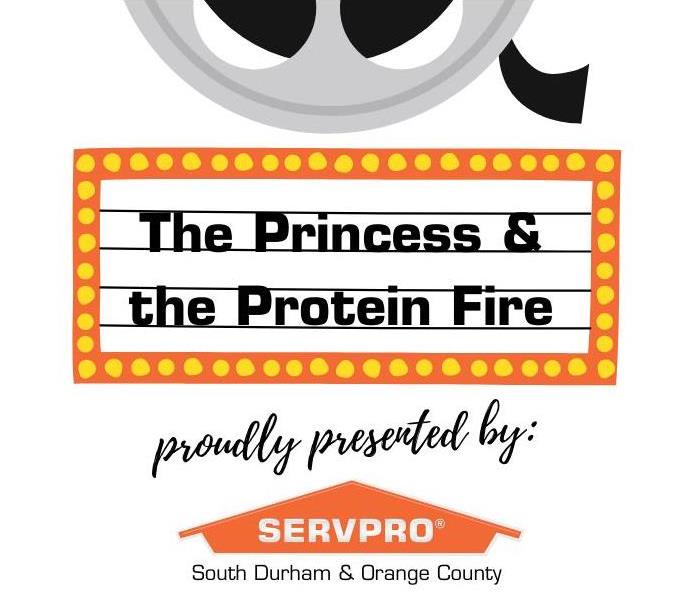 'The Princess and the Protein Fire'
'The Princess and the Protein Fire'
Once upon a time in Orange County North Carolina, in the quaint and lovely town of Chapel Hill there lived a princess who had come to the University to acquire her doctoral degree. Prior to her arrival, she had purchased a lovely investment property to domicile in while obtaining her degree. One night, after a long day of lectures and labs, she returned home and seasoned some organic chicken breasts and placed them in the oven. She sat down on her comfortable recliner, opened her laptop and began to study. Her eyes became heavy and before she knew it she had fallen asleep.
The loud blaring of her smoke alarm system roused her from her slumber. The house was filled with smoke. She quickly exited the home, as the local fire department quickly arrived to extinguish the fire. Fortunately, the fire was contained to the oven and there was only smoke damage. However, the smoke damage left a terrible malodor that was insufferable to her senses. She called her insurance agent who advised her to call his guy at SERVPRO of South Durham and Orange County. After spending the night at the Siena Hotel, she called the referred gentleman who arranged at a time of her convenience to come out and assess the situation.
The tall, dark and handsome gentleman arrived with his trusty project manager in a sparkling SERVPRO green Italian sports car (Fiat 500) and quickly and accurately assessed the situation. They put her mind at ease with their professionalism and knowledge of fire cleaning techniques and effective processes for odor removal. They explained how her fire was protein based and would require a wet cleaning process. They addressed everything from structure cleaning, textiles and electronics. The SERVPRO team after receiving the proper authorizations, worked with her and the insurance company and restored her home, "Like it never even happened." The princess was overjoyed and wrote a glowing Google review.
The Princess went on to graduate, met a handsome prince, after her residency, married, had two children and lived happily ever after.
The End!
Understanding Fire Extinguishers
6/19/2020 (Permalink)
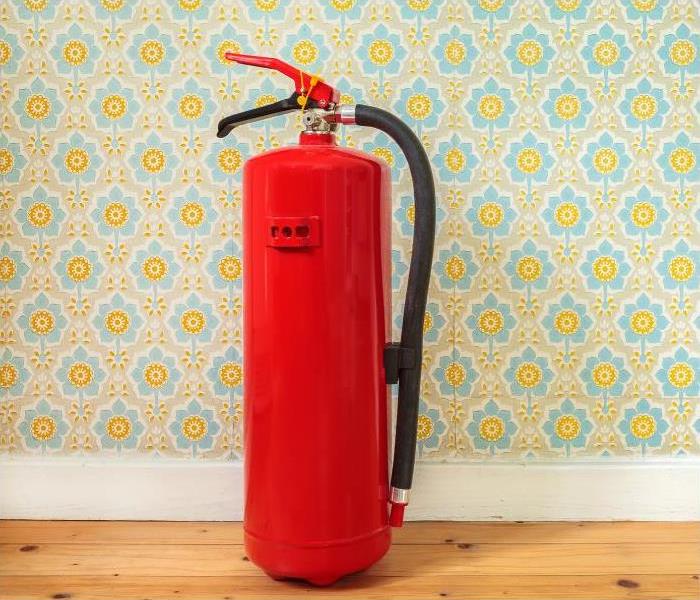 Fire Extinguisher
Fire Extinguisher
Fires most often erupt without warning, and double in size within seconds - knowing what to do and how to do it is critical when faced with this emergency situation. Understanding types of fires, fire extinguisher coding and proper usage is a cornerstone in life safety and property damage minimization. The type of combustible material determines the fire classification and fire extinguisher codes correspond to fire classifications.
Fire Classes and Corresponding Fire Extinguisher Codes
- Class (A) Fire is a fire with a combustible material of wood, paper, plastic or clothing. It is generally the easiest fire to put out. A Class (A) fire can be extinguished with water or foam. A Class (A) fire extinguisher will put out these fires
- Class (B) Fire has a combustible material of oil, grease, gas or alcohol. A Class (B) Fire cannot be extinguished with water. The use of water will cause the fire to spread by causing the combustible material to splatter or lift above the water. Many injuries have occurred to people improperly extinguishing a grease fire. A Class (B) Fire extinguisher uses dry foam or carbon dioxide to suppress the fire.
- Class (C) Fire is an electrical fire. Electrical fires can be caused by a malfunctioning appliance, faulty wiring, or an overloaded outlet. This type of fire cannot be extinguished with water. Water will intensify the fire because it conducts electricity. A Class (C) fire is suppressed with carbon dioxide or dry powder.
- Class D Fire has combustible metals as its material source. A Class (D) fire is extinguished with dry powder. The dry powder removes the fuel from the oxygen and extinguishes the fire. A Class (D) fire is not common in homes.
The best type of fire extinguisher to purchase for home use is an A, B, C extinguisher. This multipurpose extinguisher can put out most common fires. Once purchased, place your extinguishers in highly visible areas. Check the gauge of the extinguisher monthly to make sure they are properly pressurized. Replace them if not.
How to use a fire extinguisher – Use the acronym PASS:
- Pull the pin.
- Aim nozzle at the base of the flames
- Squeeze the nozzle
- Sweep back and forth until flames are extinguished
(If flames reignite, repeat the process.)
Time Sensitive Nature of Fire and Smoke Restoration
6/12/2020 (Permalink)
After everyone is safe and the fire department has extinguished the flames, the aftermath of a fire and smoke damaged home or business can be traumatic and overwhelming; especially, if the next steps of mitigation and restoration are unknown. Every year, thousands of home and business owners experience a fire loss and the SERVPRO franchises are there to assist them in the process of making it "Like it never even happened.” The #1 thing to remember after experiencing a fire is that time is of the essence when it comes to mitigating your loss.
Key actions to take:
- Call your insurance carrier and file a claim
- Get approval for a restoration company to perform emergency services
Your insurance carrier will be able to answer questions you may have, start the claims process, and give authorization for emergency restoration services to be performed to prevent further damage to the property and its contents. The insurance carrier will also assign an insurance adjuster to work with you and your restoration company in determining what is salvageable and what needs to be replaced.
Once the property has been released by the fire marshal emergency services can proceed.
Emergency services include:
- Board up of fire damaged and compromised windows and doors
- Installing roof tarps to prevent water intrusion due to fire damaged roofing
- Providing temporary power if necessary
- Winterization of utilities
- Drying and dehumidification of home or business if water was used to extinguish the fire to prevent further damage to the structure and contents
- Initial cleaning to salvage items that could be permanently damaged due to soot exposure
- Pack out of contents for cleaning
Quickly getting emergency services started increases the odds of salvaging high value and sentimental soot damaged items like electronics, marble counter tops, furniture, precious metals, artwork, and photos. It also reduces the size of your insurance claim which can be a benefit at the time of renewal.
If you experience a fire loss your knowledgeable SERVPRO of South Durham and Orange County team will work with you to get you back into your home or business as quickly as possible. Call us 24/7 at (919)596-1242.
Clothes Dryer Fires – Costly and Dire
6/5/2020 (Permalink)
Annually, clothes dryer fires cause 233 million dollars in property damage, accounting for seven deaths and 344 civilian injuries. According to the National Fire Prevention Association, fire fighters respond to over 13,000 home fires caused by clothes dryers each year. The primary factor for dryer fires is failure to clean – the root cause of 27% of these fires can be attributed to electrical component malfunction with lint acting as a tinder to accelerate the fire. Preventive measures are essential in protecting both yourself and your home. Here are a few key tips you can easily put into practice to lessen the risk of a home dryer fire:
- Clean the lint trap before and after each use
- Never operate the dryer without the lint trap
- Do not overload the dryer
- Have gas dryers serviced annually
- Check the duct work that exhausts outside the home for proper connection
- Check the exhaust flap to ensure it is properly working
- Dry on the lowest setting after washing chemically stained clothing
- Do not operate the dryer while away from the home
- Pull the dryer out, clean under and behind it to remove potential fire hazards
- Have SERVPRO of South Durham and Orange County clean your dryer ducts semi-annually or annually (depending on dryer use)
- Replace flexible duct with a ridged duct, as flexible ductwork can accumulate large amounts of lint and sag causing a fire hazard
Understanding Volts, Amperage and Watts to Prevent Electrical Fires
5/29/2020 (Permalink)
Each year SERVPRO franchises are called in to clean up the aftermath of commercial and residential fires and like the corporate model, we do all we can to, make it "Like it never even happened." Fire damage can have far more ominous and long lasting effect than the water damage restoration services we provide. In addition to structural damage to the property, environmental toxins releases in the air by burning objects, fires sometimes do take lives.
- Electrical Fires in the United States cause $1.3 billion dollars in property damage, 51,000 fires and 500 deaths annually.
- The US Consumer Product Safety Commission claims faulty electrical receptacles as the cause of 5,300 fires annually.
- Electrical Arching, discharge or jump of current on an unintended path to a grounded object, as the cause of 28,000 fires and $700 million dollars in damage annually.
Fire Prevention, beginning with educational awareness and exposure is critical in saving lives and reducing the annual cost of property losses. Understanding the practical relationship of volts, amperage and watts to daily living is essential in preventing and reducing electrical fires.
Appliances and electrical devices are a part of everyday life that functions by plugging the cords into the outlets or receptacles and turning the devices on. How this works is often taken for granted. Being properly educated on the basics of electrical terminology and their practical functionality can save your life and property.
Homes have numerous wires running behind walls from a distribution panel and terminating at a receptacle, switch, or light fixture. Inside the electrical distribution box are circuit breakers or fuses. The circuit breakers or fuses are designed to detect current that exceeds the load capacity of the wire or circuit and to click off or blow to prevent a potential fire. Voltage, Amperage and Watts are the forms of measurement that appliances and electrical devices use; understanding the electrical current draw of each appliance and the load tolerance of each circuit in your home will prevent an overloaded circuit and minimize the risk of a fire.
- Voltage or Volts is an electrical measurement of line pressure. The power or current from the power plant feeds into the home at either 120V or 240V. Most receptacles and household appliances and electronic devices run on 120V. The 240V are reserved for the water heater, dryer and stove.
- Amperage or Amps is a measurement of current flow or pull of current by an appliance or electrical device. Most household wiring or circuits are set to not exceed 15 amps, with the exception of 20 amp circuits in the kitchen for the microwave, 50 amp circuits for the stove and 30 amp circuits for the clothes dryer. All appliances or electrical devices will have a small silver plate on them that tells the amperage or watts pulled by them.
- Watts is a load rating of current pull of electrical devices. Watts can be calculated by multiplying volts by amps. A 15 amp circuit is equivalent to 1800 watts and a 20 amp fuse is equivalent to 2400 watts running on 120V.
It is important to read the label on the back or underside of appliances to understand the current drawn. Too much current drawn through a line causes the wire to overheat and breaks down the insulation on the wire. This can cause faulty wiring that results in a fire. Overloading a circuit with too much current will either trip the breaker or blow the fuse to stop the current flow to minimize damage and prevent a fire. A great resource directory for household appliance wattage can be found at https://generatorist.com/power-consumption-of-household-appliances.
Load capacity on wiring is set to match its tolerance limits. Household wiring that is set for 15 amps is not designed to conduct loads higher than 15 amps. As a general practice it is best not to push the tolerance limits on a circuit. Never under any circumstance replace a circuit breaker or fuse with a one of higher capacity without rewiring the entire circuit for the equivalent tolerance and rating. Failing to do so will result in catastrophic line failure and fire.
- Also never use an extension cord rated less than the amperage or wattage pulled by the electrical device it will be plugged into.
- Replace any frayed cords on appliances or electrical devices.
- If you see sparks cut the power.
- Have an ABC rated fire extinguisher to put out a fire including a Class “C “electrical fire.
- Install and regularly check your smoke detectors.
- Never plug in an appliance or electrical device without knowing your line load.
- If you have experienced a fire and need remediation, call SERVPRO of South Durham and Orange County at 919-596-1242






 24/7 Emergency Service
24/7 Emergency Service













